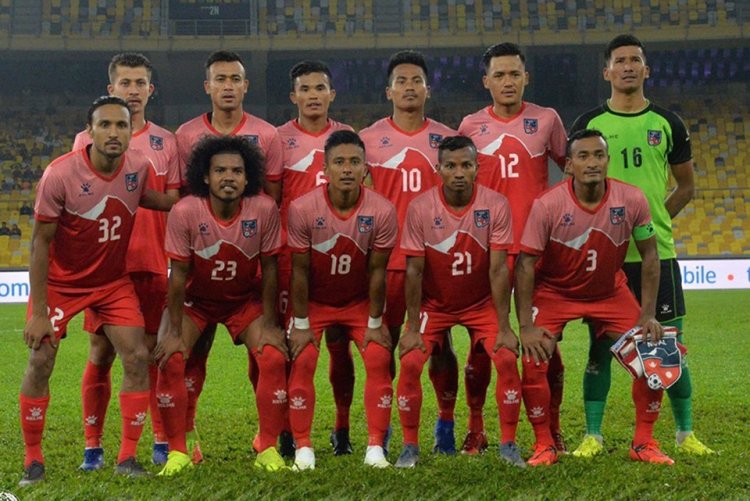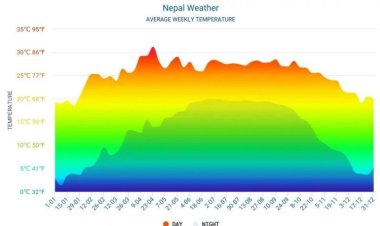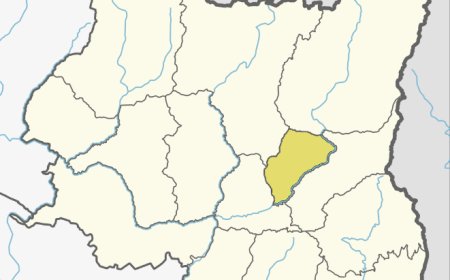The Hurdles on Nepal's Path to the FIFA World Cup
Nepal's absence from the FIFA World Cup can be attributed to challenges such as limited infrastructure, financial constraints, competing priorities, and limited international exposure.

The FIFA World Cup is undoubtedly one of the most prestigious and widely watched sporting events in the world. The tournament brings together nations from across the globe, showcasing their footballing talents and promoting a sense of unity and excitement. While many countries participate in this grand event, there are several reasons why Nepal, a nation passionate about football, has yet to make its mark on the World Cup stage. In this article, we will explore the challenges Nepal faces in joining the World Cup and shed light on the potential steps the country can take to overcome these obstacles.

-
Lack of infrastructure
Nepal faces a significant challenge in terms of infrastructure when it comes to hosting a FIFA World Cup. The country currently lacks the necessary stadiums, training facilities, and transportation systems required to successfully organize such a large-scale international sporting event. Inadequate stadium infrastructure means that Nepal may struggle to meet the requirements set by FIFA in terms of seating capacity, safety standards, and spectator amenities. Similarly, the absence of well-equipped training facilities hampers the development of players and the preparation of a competitive national team. Additionally, the lack of efficient transportation infrastructure poses logistical difficulties for teams, officials, and fans traveling to and within Nepal. Addressing these infrastructure gaps and making substantial investments in stadium development, training facilities, and transportation networks would be crucial steps for Nepal to overcome this challenge and enhance its chances of hosting or participating in a FIFA World Cup. -
Stadiums
Hosting a FIFA World Cup requires stadiums that meet specific criteria in terms of capacity, safety, and facilities. Nepal currently lacks stadiums that meet these international standards. The existing stadiums may have limited seating capacity, inadequate facilities, or outdated infrastructure. Upgrading or constructing new stadiums to accommodate a large number of spectators and provide modern amenities would be necessary to host World Cup matches. -
Training Facilities
Developing a competitive national team necessitates proper training facilities. Nepal may lack well-equipped training centers, including high-quality pitches, gymnasiums, medical facilities, and other amenities necessary for player development. Inadequate training facilities can hinder the training and preparation of players, limiting their ability to compete at the international level. -
Transportation
Hosting a World Cup requires efficient transportation systems to facilitate the movement of teams, officials, and fans between stadiums, hotels, and other event venues. Nepal's transportation infrastructure, such as roads, airports, and public transport networks, may not be adequately developed or equipped to handle the increased demand and logistical requirements of a major international tournament. Insufficient transportation infrastructure can pose challenges in terms of accessibility, logistics, and crowd management during the World Cup. -
Ancillary Infrastructure
Apart from stadiums and training facilities, hosting a World Cup also necessitates ancillary infrastructure such as accommodation, hospitality services, media facilities, and security arrangements. Nepal's current infrastructure in these areas may not be sufficient to cater to the needs of teams, officials, media personnel, and spectators during the tournament. Expanding and upgrading accommodation options, enhancing hospitality services, and ensuring robust security arrangements would be essential to successfully host a FIFA World Cup. -
Capacity
Hosting a FIFA World Cup requires stadiums with a substantial seating capacity to accommodate a large number of spectators. The existing stadiums in Nepal may have limited seating capacity, which could pose a challenge in meeting the minimum requirements set by FIFA. To host World Cup matches, Nepal would need to upgrade or construct stadiums with larger capacities to ensure they can accommodate the influx of local and international fans. -
Safety Standards
FIFA mandates strict safety standards for stadiums hosting World Cup matches to ensure the well-being of players and spectators. These standards encompass various aspects such as emergency exits, crowd control measures, security arrangements, and structural integrity. Existing stadiums in Nepal may not meet these international safety standards, requiring significant improvements or the construction of new stadiums to ensure the safety and security of everyone involved. -
Facilities
Alongside seating capacity and safety, FIFA also demands stadiums with adequate facilities to provide a comfortable and enjoyable experience for spectators. This includes amenities like restroom facilities, food and beverage outlets, VIP areas, media facilities, and accessible infrastructure for people with disabilities. Existing stadiums in Nepal might have inadequate facilities or outdated infrastructure, necessitating substantial upgrades or the construction of new stadiums that can offer modern amenities to meet FIFA's requirements. -
Infrastructure Modernization
Hosting a FIFA World Cup often calls for extensive infrastructure modernization around stadiums, including transportation networks, parking facilities, and access roads. Nepal might need to invest in improving transportation links and creating efficient access routes to the stadiums to handle the increased traffic during the tournament. Upgrading parking facilities and ensuring smooth traffic management are crucial aspects of stadium infrastructure that need attention.
Addressing these challenges would require substantial investments from the government, private sector, and international organizations. Upgrading or constructing new stadiums would involve careful planning, architectural design, and construction management to meet FIFA's criteria. Additionally, it would also involve considering sustainability aspects, incorporating modern technologies, and creating a legacy for the future use of these stadiums beyond the World Cup.
By investing in stadium infrastructure, Nepal would not only enhance its chances of hosting a FIFA World Cup but also improve the overall sports infrastructure within the country. These upgraded stadiums could become valuable assets for hosting other international sporting events, promoting local football leagues, and fostering the development of the sport at various levels.
What's Your Reaction?



































































































